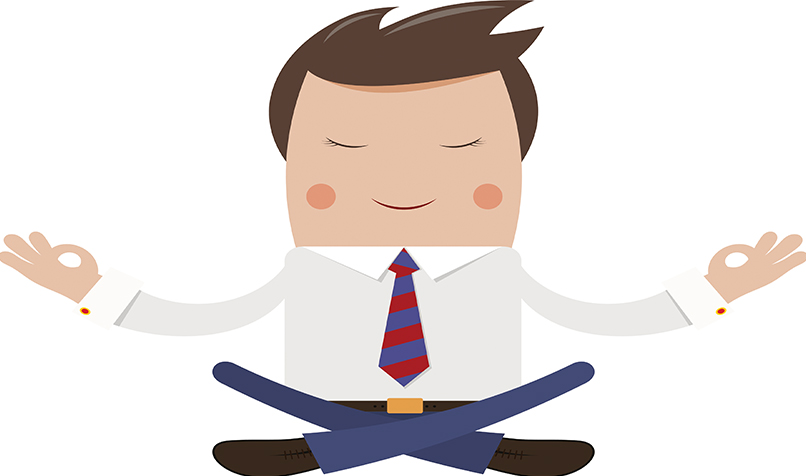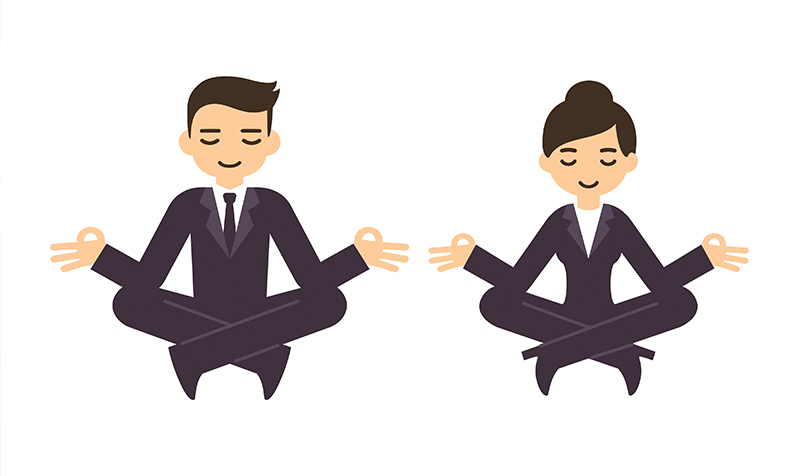Loading component...
At a glance
By Molly Furzer
When our mobile phone runs out of battery, we know it’s time to plug it in to recharge, but when we run out of energy ourselves, what’s the solution?
Feeling stressed or tired isn’t uncommon. Yet while most of us understand the importance of recharging our batteries, few of us actually do anything about it.
Just like balancing the books, managing your energy is about making sure your energy expenditure is balanced with energy renewal, says Tony Schwartz, founder of The Energy Project, a US-based organisation that works with enterprises to create more energised and sustainable work cultures.
It’s simply a matter of becoming more conscious and intentional about managing your own energy, he says.
“Energy is something inside you and has properties that make it a very powerful resource – it can be expanded, it can be renewed and you can learn to use it more efficiently,” Schwartz states in his TEDx Talk, “The way we’re working isn’t working”.
He describes four types of energy: physical, emotional, mental and spiritual.
“Physical, it’s the ground of all energy that the others rest on. Emotional, that’s the quality of your energy because how you feel profoundly influences how you perform,” he says.
"Energy … it can be expanded, it can be renewed and you can learn to use it more efficiently."
“Mental is the focus of your energy – so if you have an ability to do one thing at a time that becomes a very powerful source of energy. The human spirit, that’s the energy derived from doing something that really matters – [having] purpose, because if something really matters to you, is there any question you bring more energy to it?”
Feeling more energised lets you accomplish more in a day, and the best news is that getting more energy isn’t that hard.
1. Audit your habits
Schwartz suggests an audit of your daily activities to look for the things that sap your energy. Do you skip breakfast and rush to work? Perhaps, like many of us, you reach for sugar or caffeine to quickly boost energy only to feel the crash later? Writing a list of your energy drains could lead to an aha moment that creates momentum for changing them, he says.
Making just a small change can help you reap big rewards. For example, in a 2013 study, researchers from the University of Sussex found that workers who stepped away from their office to have lunch at the beach or in a park were much happier on their return than those who ate lunch at their desk or at an on-site cafe.
In fact, those eating al desko recorded a drop in happiness after lunch. Taking your lunch outdoors not only gives your eyes a rest from the computer screen, it can give a happiness zap to your emotional energy, too.
2. Schedule rest
Rest is typically undervalued and even demonised, says Schwartz, yet it’s what we need most to replenish our energy.
“Human beings are designed to pulse between spending energy and renewing energy – just think of our heartbeat, it’s meant to rise and fall throughout the day depending upon demand ... Our brainwaves are meant to move from high frequency electrical activity and lower frequency at night so you’re capable of sleeping,” he says.
If you want to feel more energetic, give rest breaks a higher priority, and don’t feel guilty about it. Take regular breaks during your work day and plan that relaxing holiday.
3. Sleep well
Good-quality sleep gives you energy to take on a new day. On the flipside, a bad night’s sleep can flatten your productivity.
In “The cost of poor sleep: workplace productivity loss and associated costs”, published in the January 2010 Journal of Occupational & Environmental Medicine, US researchers estimated that decreased employee productivity flowing from sleep disturbances and fatigue cost employers US$1967 per employee each year.
If you’re not sleeping well through the night or waking up feeling tired, try skipping the afternoon coffee, avoiding alcohol at night, and getting to bed at the same time each night – early enough to get eight hours of sleep.
If your mind won’t shut down, try writing down your thoughts earlier in the evening. You can clear your head for sleep and come back to your list in the morning.
4. Don't worry
“One of the major sources of wasted mental, emotional and physical energy is through the stress associated with worrying over future things that haven’t happened, and ruminating over past events that have already come and gone,” says Craig Hassed, a mindfulness expert and associate professor at Monash University.
He says just the act of worrying can activate the fight-or-flight response and trigger the sympathetic nervous system into action.
“When we are doing that all day, every day, it not only makes us feel stressed and anxious, but we are more tired at the end of the day. It also produces a wear and tear on our system called allostatic load,” he says, which over time promotes the progression of many illnesses.
Mindfulness meditation and cognitive behaviour therapy are both effective ways to learn to worry less.
5. Get mindful
Mindfulness training is one solution that big businesses such as Google are implementing to decrease employees’ stress and improve their performance and wellbeing. Mindfulness can be as simple as paying attention – “being aware, engaged and on task,” says Hassed.
“Even if we're planning for the future, we should do it when grounded in the present moment. If we are anxious, we are not really present. Much of what we call planning and preparation is really worry pretending to be useful,” he explains.
It’s not just a work thing. You can be mindful when you’re at home, giving your family, friends or leisure activities your full attention.
“These practices combined will help to conserve a significant amount of energy and help people to refuel and refresh for a new day,” says Hassed.
Get started with Hassed’s tips in “Mindfulness for beginners” (below), and the free Mindfulness for Wellbeing and Peak Performance course he co-presents online at www.FutureLearn.com.
6. Breathe deep
Grabbing a natural energy boost can be as easy as breathing deeply into your belly.
“So much of the energy drained from our system is caused by thoracic breathing. It’s shallow, in the chest and rapid, and it’s all part of the stress response,” says counselling psychologist and yoga therapist Michael de Manincor, founder of The Yoga Institute in Sydney.
He suggests a daily practice of slow abdominal breathing, also called diaphragmatic breathing, to trigger the body’s relaxation response. Slow abdominal breathing can be done anywhere – even at your desk.
Lie down, or sit comfortably, with your hands on your belly. Breathe in and out deeply and let the belly move up and down with the breath. Practise for at least two to 10 minutes daily. Slot it into your workday between projects, when you need an energy boost or to calm yourself.
7. Prioritise self-care
Caring for others is honourable, but caring too much can send you into compassion fatigue, says Schwartz. “This comes from expending too much energy on behalf of others and too little on behalf of oneself, so you end up getting burnout and breakdown,” he says.
“The problem is we’ve adopted the myth that serving others is for the greater good … sometimes to the exclusion of taking care of ourselves. The reality is that if you don’t take care of yourself, then you won’t be able to take care of others.”
Becoming more aware of the energy drains in your life, and how best to replenish your energy, can make you better at looking after others and, ultimately, lead to a more productive you.
Put yoga to work

Starting your day with a few rounds of yoga sun salutations can give your body a healthy stretch and an energy lift.
Yoga devotees say they feel calmer and more energised after a practice. Researchers at Goldsmiths, University of London, suggest this is due to yoga poses stimulating the vagus nerve, which acts on the parasympathetic nervous system to regulate the heart rate and promote calm and soothing states.
Yoga comes in different styles, with each incorporating movement, breath and meditation to different extents. Hatha yoga is the most common; ashtanga yoga is more athletic; Iyengar yoga involves holding poses for longer; and Bikram is done in a room heated to 37°C. There’s also vinyasa yoga, Jivamukti, Kundalini and other varieties.
Restorative yoga, which uses more passive poses – for example, lying with your legs up the wall – is a particularly good choice for energy renewal if you are already feeling burnt out.
Some workplaces have yoga classes in-house. Corporate Conscience Yoga, run by The Yoga Foundation, sees corporate employees get yoga tailored to their needs, while some of the fees go towards funding yoga classes for disadvantaged people.
Mindfulness for beginners

“A life without mindfulness is a little like reading a book without any punctuation – it doesn’t make any sense,” explains mindfulness expert Craig Hassed.
The formal practice of mindfulness meditation involves sitting still and paying attention in a mindful way. “We might have a practice of five or 10 minutes in the morning and early evening, like punctuating our day with full stops,” says Hassed.
“Then we can have brief formal practices of 15-60 seconds throughout the day, such as between a meeting finishing and getting back to work on a project – these are like commas. These mindfulness breaks prime the brain to be more present when we go back to what we need to do next.”

